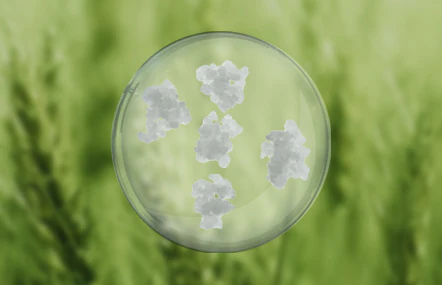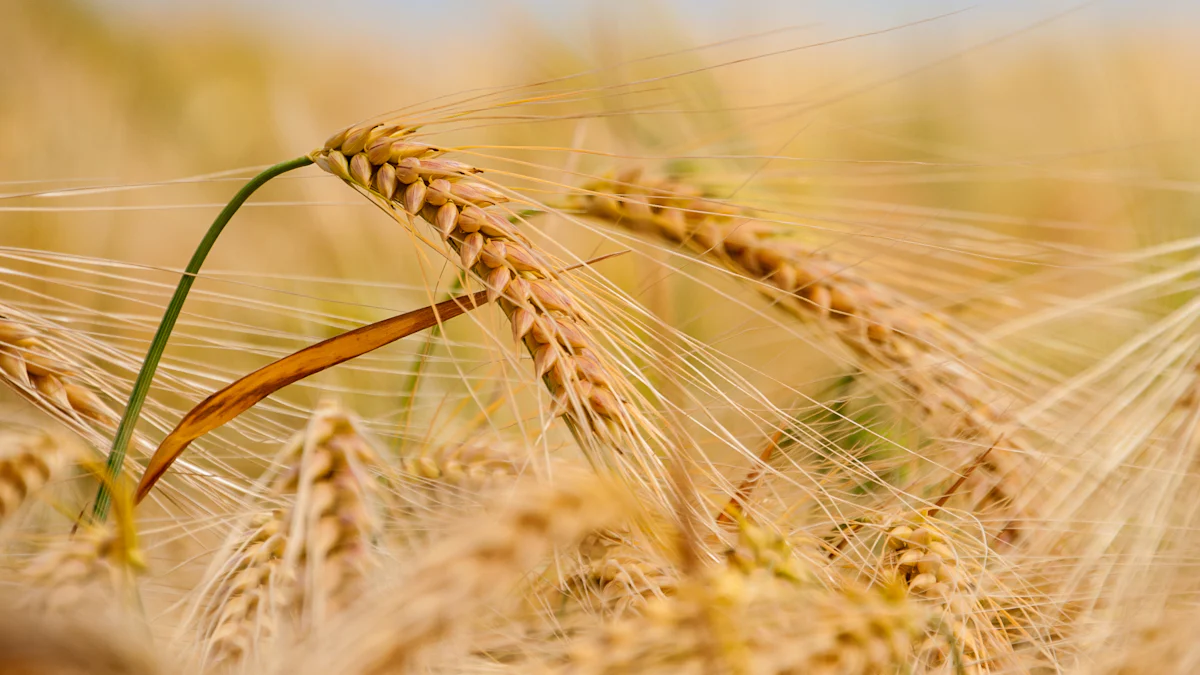How Is Hydrolyzed Rye Phytoplacenta Extracted?

Rye offers numerous health benefits due to its rich composition of antioxidants, vitamin E, riboflavin (vitamin B2), and thiamine (vitamin B1). These components contribute significantly to overall well-being. Rye's antioxidant properties help combat oxidative stress, which can damage cells and accelerate aging. The nutritive elements in rye support various bodily functions, promoting better health.
Hydrolyzed Rye Phytoplacenta Extract, derived from the rye embryo, stands out for its skin health benefits. This extract helps keep the skin firm and healthy by providing essential nutrients and antioxidants. The unique properties of rye make it an excellent ingredient in skincare products.
Understanding Hydrolyzed Rye Phytoplacenta Extract
What is Hydrolyzed Rye Phytoplacenta Extract?
Definition and Composition
Hydrolyzed Rye Phytoplacenta Extract comes from the placenta of the rye embryo. The extraction process uses methods like acid hydrolysis, enzyme hydrolysis, or other techniques. This extract contains a rich composition of essential nutrients and cellulose-based polysaccharides. The hydrolysate of secale cereale seed placenta offers unique benefits for skin health.
Benefits for Skin Health
Hydrolyzed Rye Phytoplacenta Extract provides several benefits for the skin. The extract helps maintain skin firmness and elasticity. The antioxidants in the extract combat oxidative stress, which can lead to premature aging. The nutritive components nourish the skin, promoting overall skin health and vitality.
Why Use Hydrolyzed Rye Phytoplacenta Extract?
Antioxidant Properties
Rye contains a high level of antioxidants. These antioxidants help protect skin cells from damage caused by free radicals. By reducing oxidative stress, Hydrolyzed Rye Phytoplacenta Extract aids in preventing signs of aging. The antioxidants also support the skin's natural repair processes.
Nutritive Components
The extract boasts an impressive array of vitamins and nutrients. Vitamin E, riboflavin (vitamin B2), and thiamine (vitamin B1) are present in significant amounts. These nutrients play crucial roles in skin health. Vitamin E helps moisturize and protect the skin. Riboflavin and thiamine contribute to cellular function and regeneration. The combination of these elements makes Hydrolyzed Rye Phytoplacenta Extract a valuable addition to skincare routines.
The Extraction Process
Overview of Extraction Methods
Acid Hydrolysis
Acid hydrolysis involves the use of acid to break down the rye embryo placenta. This method helps release essential nutrients and cellulose-based polysaccharides. Acid hydrolysis can efficiently extract Hydrolyzed Rye Phytoplacenta Extract. However, the process may require careful control to avoid damaging sensitive components.
Enzyme Hydrolysis
Enzyme hydrolysis uses specific enzymes to catalyze the breakdown of the rye embryo placenta. This method offers a more gentle extraction compared to acid hydrolysis. Enzyme hydrolysis can maintain the integrity of vitamins and amino acids. The specificity of enzymes ensures a targeted extraction, making Hydrolyzed Rye Phytoplacenta Extract rich in beneficial compounds.
Fermentation Method
The fermentation method involves the use of microorganisms to break down the rye embryo placenta. This natural process enhances the bioavailability of nutrients. Fermentation can also produce additional beneficial compounds. Hydrolyzed Rye Phytoplacenta Extract obtained through fermentation often contains small molecular weight substances. These substances improve skin penetration and efficacy.
Step-by-Step Extraction Process
Preparation of Rye
The extraction process begins with the preparation of rye. The rye grains undergo cleaning to remove impurities. The cleaned rye is then soaked to soften the embryo placenta. This step ensures that the subsequent extraction methods can effectively break down the plant cells.
Application of Extraction Method
The prepared rye undergoes the chosen extraction method. Acid hydrolysis involves adding acid to the rye mixture. Enzyme hydrolysis requires the addition of specific enzymes. The fermentation method introduces microorganisms to the rye. Each method aims to break down the rye embryo placenta and release Hydrolyzed Rye Phytoplacenta Extract.
Purification and Concentration
The extracted mixture undergoes purification to remove unwanted components. Filtration and centrifugation help separate the hydrolysate from solid residues. The purified extract then undergoes concentration to enhance its potency. The final product is a rich source of Hydrolyzed Rye Phytoplacenta Extract. This concentrated extract contains essential nutrients and antioxidants beneficial for skin health.
Benefits of Different Extraction Methods
Acid Hydrolysis Benefits
Efficiency and Yield
Acid hydrolysis offers a high efficiency in extracting Hydrolyzed Rye Phytoplacenta Extract. This method breaks down the rye embryo placenta rapidly. The process ensures a high yield of essential nutrients. The extracted compounds include cellulose-based polysaccharides and amino acids. These components contribute to the extract's skin health benefits.
Potential Drawbacks
Acid hydrolysis may damage sensitive components in the rye embryo placenta. The use of acid can alter the structure of some nutrients. This alteration might reduce the overall effectiveness of the Hydrolyzed Rye Phytoplacenta Extract. Careful control of the process is necessary to minimize these drawbacks.
Enzyme Hydrolysis Benefits
Specificity and Mild Conditions
Enzyme hydrolysis provides a gentle extraction method for Hydrolyzed Rye Phytoplacenta Extract. Specific enzymes target the breakdown of the rye embryo placenta. This specificity helps maintain the integrity of vitamins and amino acids. The mild conditions of enzyme hydrolysis preserve the beneficial compounds. The result is an extract rich in nutrients that promote skin health.
Potential Drawbacks
Enzyme hydrolysis may require longer processing times compared to acid hydrolysis. The cost of specific enzymes can be higher. These factors might affect the overall efficiency of the extraction process. Despite these drawbacks, the quality of the Hydrolyzed Rye Phytoplacenta Extract remains high.
Fermentation Method Benefits
Natural Process
The fermentation method uses microorganisms to break down the rye embryo placenta. This natural process enhances the bioavailability of nutrients. Fermentation produces additional beneficial compounds. These compounds improve the efficacy of Hydrolyzed Rye Phytoplacenta Extract. The extract often contains small molecular weight substances. These substances penetrate the skin more effectively.
Potential Drawbacks
Fermentation requires precise control of environmental conditions. The process can be time-consuming. Variability in microbial activity might affect the consistency of the extract. Despite these challenges, the fermentation method yields a high-quality Hydrolyzed Rye Phytoplacenta Extract.
Applications and Future Potential

Current Uses in Skincare
Anti-Aging Products
Hydrolyzed Rye Phytoplacenta Extract plays a crucial role in anti-aging products. The extract's rich composition of antioxidants helps combat oxidative stress, which can lead to premature aging. Many anti-aging creams and serums incorporate this extract to enhance skin firmness and elasticity. Users often notice a reduction in fine lines and wrinkles after regular application. The extract's ability to boost cell regeneration further contributes to a youthful appearance.
Moisturizers and Serums
Moisturizers and serums benefit significantly from Hydrolyzed Rye Phytoplacenta Extract. This ingredient helps maintain the skin's moisture levels, making it ideal for dry or rough skin. The extract's nutritive components, such as vitamins and amino acids, nourish the skin deeply. Users experience softer, smoother, and more hydrated skin. The inclusion of this extract in skincare formulations enhances overall skin texture and appearance.
Future Research and Developments
Potential New Applications
Future research aims to explore new applications for Hydrolyzed Rye Phytoplacenta Extract. Scientists are investigating its potential in treating skin conditions like eczema and psoriasis. The extract's anti-inflammatory properties may offer relief for these conditions. Researchers also consider its use in hair care products. The nutrients in the extract could promote healthier hair growth and scalp condition.
Ongoing Studies
Ongoing studies focus on the long-term benefits of Hydrolyzed Rye Phytoplacenta Extract. Researchers aim to understand how the extract interacts with different skin types. Studies also explore the optimal concentration levels for maximum efficacy. The combination of Hydrolyzed Rye Phytoplacenta Extract with other natural ingredients, like mushroom extract, is another area of interest. These studies will help develop more effective and targeted skincare solutions.
The blog explored the extraction process and benefits of Hydrolyzed Rye Phytoplacenta Extract. The extract offers significant advantages for skin health. Antioxidants in the extract combat oxidative stress and promote skin firmness. Nutritive components like vitamins and amino acids nourish the skin. Different extraction methods, including acid hydrolysis, enzyme hydrolysis, and fermentation, provide unique benefits. Future research aims to discover new applications for Hydrolyzed Rye Phytoplacenta Extract. Potential uses include treatments for skin conditions and hair care products.
